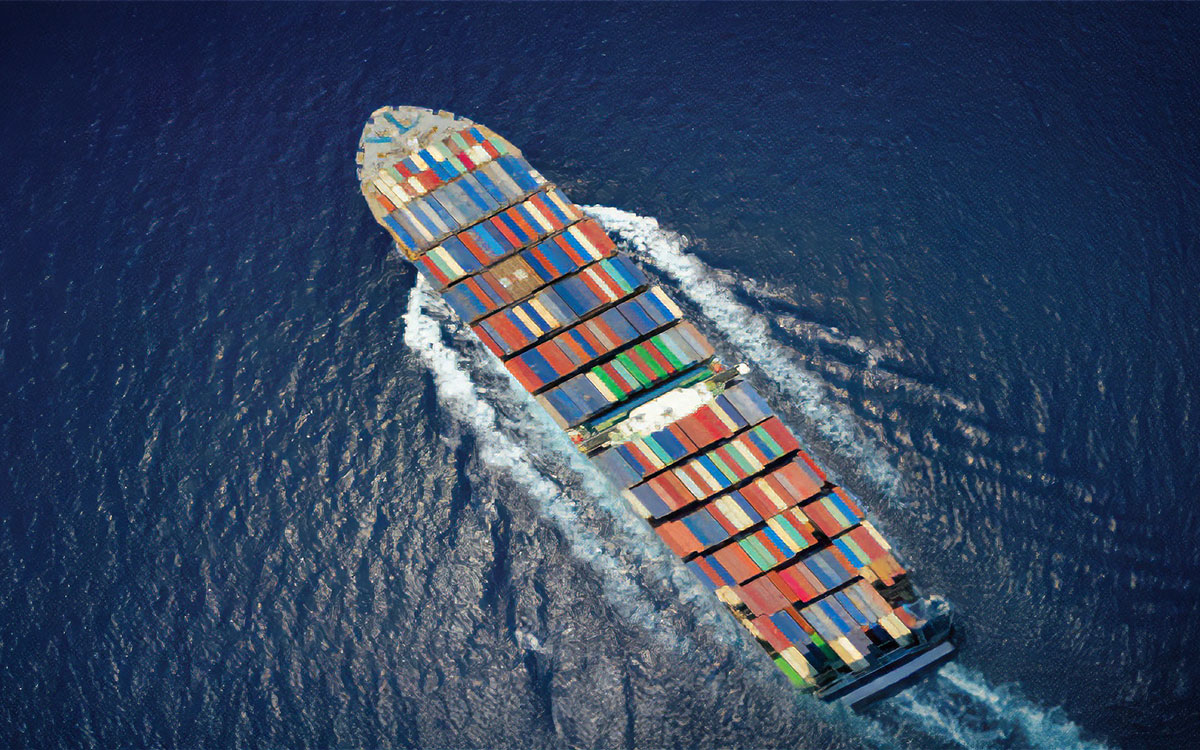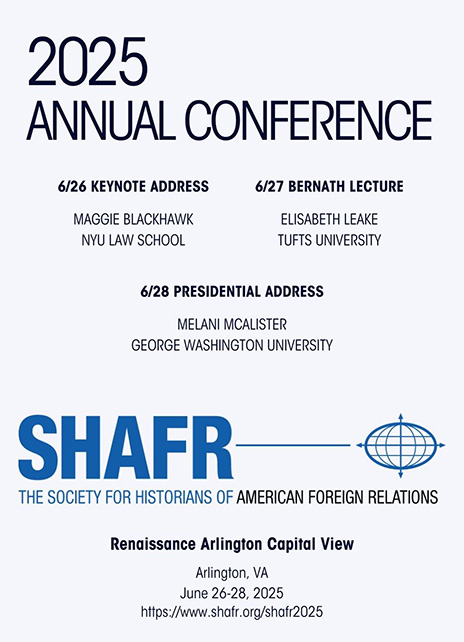Advancing U.S. Economic Interests Overseas in an Era of Rising Tariffs
When tariff policy is a primary tool of economic statecraft, U.S. diplomats have a unique role to play.
BY DANIEL CROCKER

Art–iStockPhoto/Hansche
Economists and other experts are writing extensively on the advisability of the current administration’s use of tariff policy as a primary tool of economic statecraft. Some have spelled out the history of America’s use of tariffs, while others debate the feasibility of the new tariffs. Far fewer deal with how career U.S. diplomats can successfully advance U.S. national interests abroad at a time when the administration is seeking to use tariff policy aggressively.
For career diplomats, gathering information and reporting to Washington, D.C., on developments and trends in the host country, including responses to U.S. policy, is a basic responsibility. Under the circumstances, this field reporting role will become proportionately more important, particularly because implementation of tariffs can often cause disproportionate changes, especially in the developing world, where economic and political stability are significantly more fragile.
Historically, economic statecraft has been an important instrument of warfare, so it is essential for U.S. diplomats to dig deep to understand and share what is happening on the ground, the impacts, and the secondary consequences of changes in tariffs.
To do so effectively, however, two important shortcomings need to be addressed: First, U.S. diplomats need to improve the competence and quality of their intelligence gathering; and second, the State Department needs to establish a unified, cloud-based solution to the process of reporting back to policymakers.
Reordering Global Trade
Since 2016 tariffs have been used by two successive administrations in an increasingly aggressive manner to restrict imports and protect favored sectors. And now the Trump administration has ratcheted up the use of tariffs so dramatically that it is fair to see it as an attempt at a wholesale reordering of global trade. In some cases, countries may make a deliberate decision, at least initially, to seek to embrace the U.S. and offer more trade and investment concessions. In many other cases, countries may seek to retaliate in subtle ways or pivot to other foreign patrons.
U.S. implementation of tariffs may well come as a shock to a host country. It is worth noting here that the benefits of soft power inherent in the post–World War II U.S. leadership of trade liberalization meant that many countries had nearly tariff-free access to the world’s richest consumer base for decades.
This is an opportunity to educate foreign interlocutors on the general nature of the U.S. balance of powers.
That, in turn, has resulted in hundreds of millions of people globally being lifted out of poverty—primarily in China, which has turned into a global export powerhouse, but also in smaller countries like Bangladesh, where women once reliant on subsistence agriculture can now earn a living making T-shirts for companies like Nike. (Such jobs also allow the U.S. government—and companies like Nike that are concerned with reputational risk—to insist on better labor conditions.) More obvious examples are the U.S. appetite for goods like coffee and bananas, neither of which can be grown naturally in the continental United States.
The U.S. may have had mixed motives in having outsourced most labor-intensive activities—companies, after all, seek to maximize profits in large part by minimizing their cost of manufacture—but the results of poverty alleviation were undeniably historic. And U.S. policymakers could naturally claim some moral global leadership by facilitating poverty alleviation. Buying from the world may have been the U.S.’s most impressive and enduring foreign aid program, even at the cost of rapid and concentrated job dislocation domestically. It is precisely the length and stability of this former U.S. position—from World War II to 2016—that is now creating the conditions for a rapid chill in bilateral and regional attitudes toward the U.S.
Consider how rapidly the situation has changed. In 2011 the U.S. Senate ratified free trade agreements with South Korea, Panama, and Colombia. All three had national security dimensions. Just four years later, two extraordinary economic and security trade agreements had been negotiated and were all but ready to be ratified by the Senate—the Trans-Pacific Partnership and the Transatlantic Trade and Investment Partnership. Both would have created major regional trading blocks and, not coincidentally, would have checked China’s growth and influence. However, both leading presidential candidates in 2016 ran in opposition to implementing them—in large part reflecting voters’ sentiment that too many jobs were being lost to outsourcing.
Dealing with Uncertainty
A Note on Two Special Sectors
Two areas affected by tariffs deserve a special note. The first is extraction, of both fossil fuels and of metals and critical minerals. U.S. diplomats stationed in countries that are either dependent on external sources of supply (e.g., Germany) or are reliant on export earnings from extraction (e.g., Nigeria) will want to pay special attention to the secondary consequences of any disruption created by applying tariffs. And U.S. diplomats will need to be cognizant not just of the impact of U.S. tariffs but also the European Union’s (EU) phase-in of the Carbon Border Adjustment Mechanism, which will eventually apply a tax on imports of “carbon-intensive” manufacturing. In the case of a country like Nigeria, its exports of fossil fuels may be subject to tariffs as well as its manufactured goods. Nigerians will immigrate to other countries if local economic conditions are dire. Similar issues for critical minerals and mining stand out in such jurisdictions as Bolivia and the Democratic Republic of the Congo.
The U.S. has been transformed into an exporting powerhouse, largely by the fracking revolution and innovative fast-tracked liquification facilities for LNG (liquified natural gas) exports by such companies as Venture Global. Countries tempted to implement retaliatory tariffs may hesitate if they are dependent on imports of oil and gas. Or they may not: China, for instance, has shrewdly and quietly targeted U.S. LNG imports. U.S. diplomats can and should report on the state of play of energy and what countries are doing to seek alternatives to the U.S., because energy infrastructure is a core component of sustainable economic development and therefore political stability.
Computer chip fabrication is another standout sector. There is considerable uncertainty about the extent to which the current administration will continue offering financial incentives to build more fabrication facilities in the U.S. At the same time, the administration may seek to apply tariffs to chip imports to incentivize more inward investment. To certain countries, most notably Taiwan, there is a considerable tension here as the island’s global leadership in chip manufacturing is seen as a core competence and perhaps even a safeguard against China’s military movements. U.S. diplomats serving in countries with fabrication or chipmaking equipment capacity (e.g., the Netherlands) will want to gather intelligence on how particular companies are responding to tariffs.
—D.C.
Today’s situation puts U.S. diplomats in a tricky position for the simple reason that the implementation of many of the new tariffs has been unstable, with sudden escalations and reversals. U.S. diplomats will need to articulate and defend the shifting policies on tariffs to the host country government, the public, and key business leaders.
This is an opportunity to educate foreign interlocutors on the general nature of the U.S. balance of powers. It is not incorrect, for instance, to note that the Constitution largely gives Congress the authority to impose tariffs—and that Congress, over time, has authorized the executive branch to deploy certain processes to determine if tariffs, generally narrowly scoped, are appropriate to apply. By design, there is a tension between Congress and the executive branch in determining and executing tariff policies. And the Supreme Court has something to say in its judicial review of the constitutionality of any action.
At the time of this writing, in mid-April, the administration’s imposition of sweeping tariffs is being challenged by a U.S. consumer goods company represented, quite ably, by Mark Chenoweth and his team at the New Civil Liberties Alliance. The lawsuit charges that the administration is exceeding their authority by imposing tariffs on the basis of the International Emergency Economic Powers Act (IEEPA).
When this case reaches the Supreme Court, a ruling may well result in an annulment of these tariffs. U.S. diplomats should feel comfortable explaining to their foreign contacts that the Supreme Court’s decision is binding on the administration. And given the economic impact of the tariffs on China in particular, which, as of the date of this draft, are at approximately 150 percent, the Supreme Court will presumably take up the case as expeditiously as possible.
Yet all this creates general economic uncertainty: It would be highly illogical for investors to make major decisions in any country, including the U.S., without knowing whether today’s broad tariffs will hold. If they do, it might make sense for investors to shift more manufacturing to Central America or Mexico, both of which have free trade agreements with the U.S. But such investments take years to get off the ground. And the administration may then apply new tariffs to any country that is a waypoint for Chinese-owned manufacturing activity.
There is another dimension to the uncertainty that U.S. diplomats must navigate. Quite simply, what is the purpose of the tariffs? Is it an attempt by the U.S. government to gain concessions from foreign countries? If so, is it clear to each foreign country what concessions will win them relief from the tariffs, or are they permanent? And if they are permanent, are they intended to reshore that manufacturing activity to the U.S., or shift the activity to another country that the U.S. would prefer to purchase from? U.S. diplomats will need to seek consistent answers to these questions from their agencies back in Washington, D.C., but remain flexible if the answers are overtaken by events and change without notice.
If the Supreme Court does declare the administration’s use of IEEPA to apply sweeping tariffs unconstitutional, then U.S. diplomats should expect to see a swift pivot toward the use of more narrowly scoped and time-honored tariff processes such as in Sections 201, 232, and 301 of the Trade Act of 1974, which are spelled out by Congress and undertaken by the U.S. Trade Representative, the U.S. International Trade Commission, and the Department of Commerce.
Those processes involve deliberative reviews of claims of damage or harm to national security and have survived legal challenge. They invite more precision, and a reversion to their use to determine tariffs may cause less overall bilateral disruption; but U.S. diplomats will still need to be able to articulate and defend them in front of constituencies adversely affected by their implementation in a foreign country.
Investment in the U.S.
Through the SelectUSA program, currently housed at the Department of Commerce, U.S. diplomats have been responsible for promoting foreign investment into the U.S. In many ways, the pitch has not changed. The U.S. is the world’s richest consumer market. Rule of law for businesses is strong and encourages innovation and risk-taking. Finance is world leading. Energy is reliable and cheap. Taxes, at both the state and federal level, are competitive. And the U.S. offers a highly competitive and productive labor pool.
It might appear at first glance that the pitch is now more compelling. After all, the application of tariffs would make the import of a good more expensive and investment in making it domestically more competitive. But the picture is not so clear. First, labor is expensive, so any labor-intensive manufacturing shift to the U.S. would need to factor in much higher costs for labor or automation to remain competitive.
There is another dimension to the uncertainty that U.S. diplomats must navigate. Quite simply, what is the purpose of the tariffs?
Whereas the U.S.-Mexico-Canada Agreement (USMCA) made a North American platform appealing, particularly to automotive companies that could source more labor-intensive parts from Mexico and do higher-value system integration in the U.S., the recent application of tariffs to Mexico and Canada make this trade agreement look less stable. And it is up for renegotiation in 2026. At any rate, USMCA is phasing in a stringent requirement for preferential tariff treatment—namely, that labor for a specific minimum percentage of a vehicle’s content is paid at least $16/hour on average, which makes Mexico’s labor costs appear less competitive.
But most important is the fact that industry is not sure which tariffs will stick. A manufacturer selling to U.S. customers must take into account two scenarios: The first is how much it costs to import a finished product (e.g., a car) from another country. The second is how much it will cost to import all the needed subcomponents—all the way up through steel, aluminum, and critical minerals like cobalt—to build the same car domestically. That cost now depends enormously on tariff levels country by country.
U.S. diplomats will need to pitch the U.S., nonetheless. One prudent approach might be to emphasize the enduring attractions of investing in the U.S. rather than address tariffs on both finished goods and inputs, since they are highly subject to change in the coming years and should not therefore be dispositive in an investment road map.
Stepping Up the Reporting Function
In this environment, the most consequential thing U.S. diplomats can do to help further U.S. interests is step up the competence and quality of economic intelligence gathering for policymakers in Washington, D.C. At post, diplomats should be seeking detailed answers to questions such as the following:
- Has anti-American sentiment picked up on social media or via foreign leaders’ speeches?
- Is there a new level of antipathy toward U.S. requests for support on such things as sanctions against Russia or Iran, or important votes at the UN?
- What are local and foreign businesses saying about the investment climate?
- Are important sectors (e.g., a textile factory in an export zone, or a banana plantation) suddenly laying off workers because of a drop in orders from the U.S.?
- Are there new investments popping up, especially by third-party countries like China that are hit hard by higher tariffs, which could be cover for changing the country of origin to shop for lower tariffs?
- Is there a change in political stability, either because unemployment is rising or because opportunistic opponents are blaming the current leadership?
- Is there a change in the foreign government’s treatment of U.S. investment in the country? Are audits or charges of corruption suddenly rising, or are there new delays in approval of permitting?
- Are there new pressures for emigration? And if so, are they flows to the U.S. or EU?
To be successful in information gathering and sharing to inform U.S. policymakers, I believe that two shortcomings need to be addressed.
The first is individual competence at intelligence gathering. Department of Commerce diplomats have largely focused on small and medium-sized company export promotion—not a priority for the administration these days—and have not typically seen themselves as essential to transmitting intelligence back to D.C. They have unparalleled connections, however, to the U.S. and foreign business community. State Department officials, meanwhile, are well versed in reporting back to D.C. but have often stayed focused on the relatively insular world of bilateral, government-to-government engagement.
In a world where trade and investment decisions are made by the private sector and are highly sensitive to tariff levels that have not been seen in a century, State Department diplomats will need to foster more external contacts. Additional technical skills can be taught through FSI—forensic auditing, for instance, to determine the ultimate ownership of a newly arrived steel company. Public diplomacy officials are already well tuned to pick up the public and social media moods and are therefore well prepared to report.
The second shortcoming has to do with getting the information back to policymakers. This is a governmentwide problem that exists across multiple agencies represented at post. Although the embassy team functions under the direction of the chief of mission and should be collaborating in the service of a common goal, much falls apart in the process of reporting back to agencies in D.C. Generally, policymakers there who need to have actionable and relevant information are consigned to picking it up in a piecemeal fashion as they can.
For this reason, I believe strongly in a single, unified, and best-in-class U.S. government cloud-hosted solution that all agencies represented at post must use for reporting purposes. Such a system would synthesize once-atomized cable-based reporting in real time with translated and annotated foreign press and social media synopses, in order to present an AI-enhanced knowledge base for all agencies to draw from. The use of AI, in particular, would eliminate the practice of cable reporting that has often devolved into translation of public source foreign media with a slender commentary wrap. That then allows U.S. diplomats to focus on the highest value-added activities of human intelligence reporting.
The reporting would be coupled with comprehensive profiles of foreign intermediaries in the public and private sectors showing all touchpoints for U.S. government engagement. Such a system would simultaneously present the latest 30,000-foot view of the state of play in any given country—but also allow for deep data dives into individual profiles, all of which are constantly being refined by new data flows. The game of telephone (which quite literally represents some of the current reporting) is no longer adequate for this critical role for our U.S. diplomats.
We have entered a new era for the U.S.’s posture and image abroad. And learning how to support it and to report back on its impact may well be the greatest contribution to national security a U.S. diplomat can make.
When sharing or linking to FSJ articles online, which we welcome and encourage, please be sure to cite the magazine (The Foreign Service Journal) and the month and year of publication. Please check the permissions page for further details.
Read More...
- “How SelectUSA Connects Foreign Investors with U.S. Companies by Daniel Crocker, The Foreign Service Journal, June 2018
- “Six Elements of Effective Economic/Commercial Diplomacy by Shaun Donnelly and Daniel Crocker, The Foreign Service Journal, January-February 2019
- “Sanctions, Tariffs, and Retaliation: Are Trade Wars the New Warfare? by Shiwen Yap, Modern Diplomacy, April 2025






